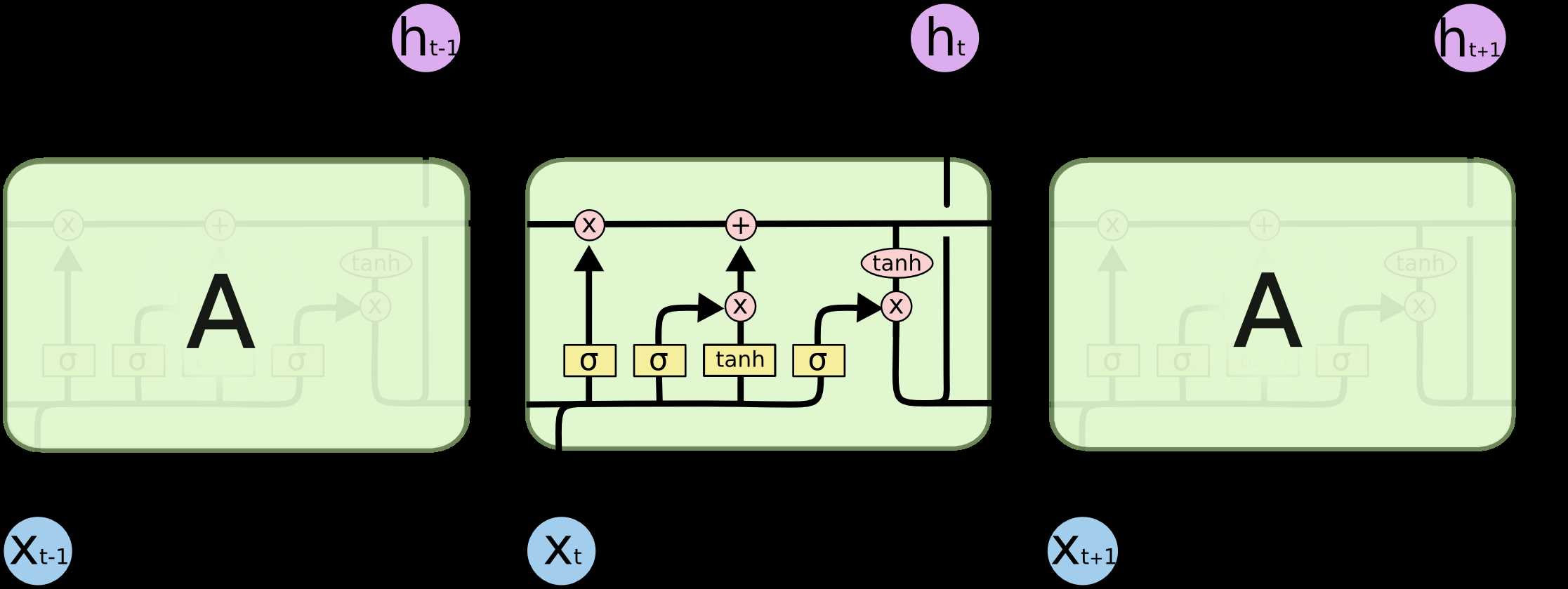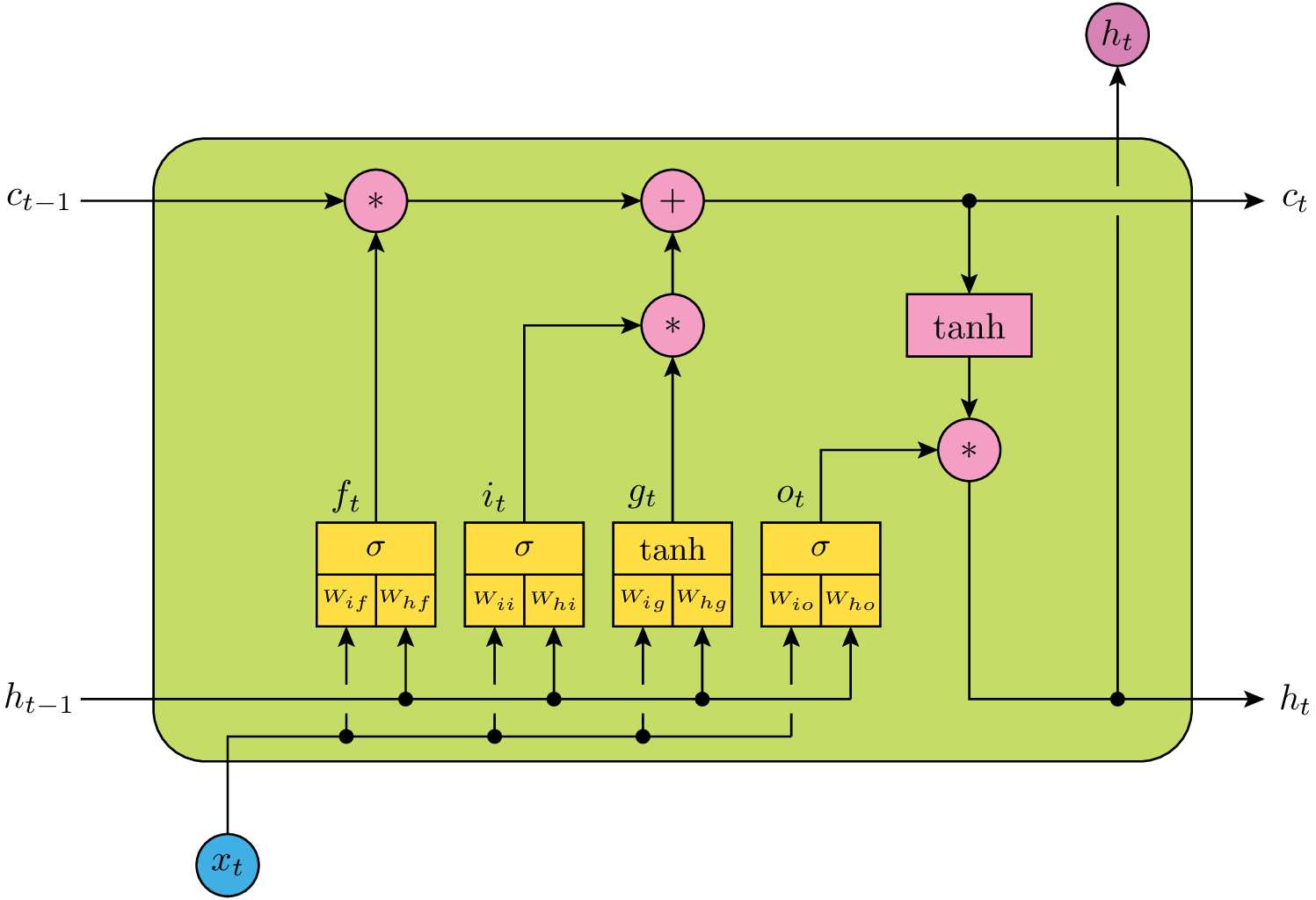标签:medium near mes bee val cuda eterm image none
Refer to :
https://medium.com/@andre.holzner/lstm-cells-in-pytorch-fab924a78b1c
http://colah.github.io/posts/2015-08-Understanding-LSTMs/

This is an annotated illustration of the LSTM cell in PyTorch (admittedly inspired by the diagrams in Christopher Olah’s excellent blog article):


The yellow boxes correspond to matrix multiplication followed by non-linearities. W represent the weight matrices, the bias terms b have been omitted for simplicity. The mathematical symbols used in this diagram correspond to those used in PyTorch’s documentation of torch.nn.LSTM:
It is also instructive to look at the implementation of torch.nn._functions.rnn.LSTMCell :
def LSTMCell(input, hidden, w_ih, w_hh, b_ih=None, b_hh=None): if input.is_cuda: ... h_t_1, c_t_1 = hidden gates = F.linear(input, w_ih, b_ih) + F.linear(h_t_1, w_hh, b_hh) ingate, forgetgate, cellgate, outgate = gates.chunk(4, 1) ingate = F.sigmoid(ingate) forgetgate = F.sigmoid(forgetgate) cellgate = F.tanh(cellgate) outgate = F.sigmoid(outgate) c_t = (forgetgate * c_t_1) + (ingate * cellgate) h_t = outgate * F.tanh(c_t) return h_t, c_t
The second argument (hidden) in fact is expected to be a tuple of: (ht-1, ct-1)
(hidden state at time t-1, cell/memory state at time t-1)
and the return value is of the same format but for time t.
Lstm Cell in detail and how to implement it by pytorch
标签:medium near mes bee val cuda eterm image none
原文地址:https://www.cnblogs.com/quinn-yann/p/9249304.html